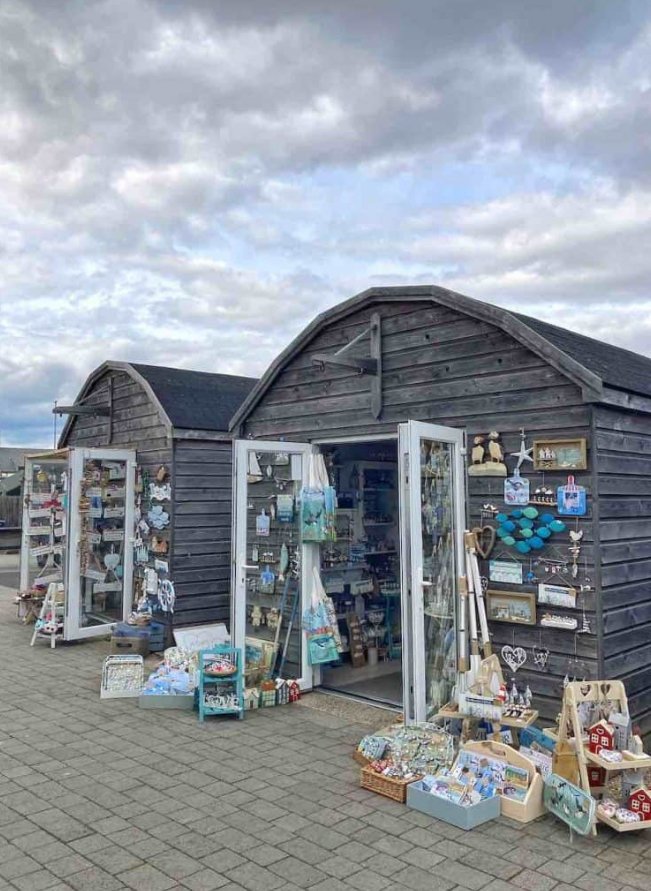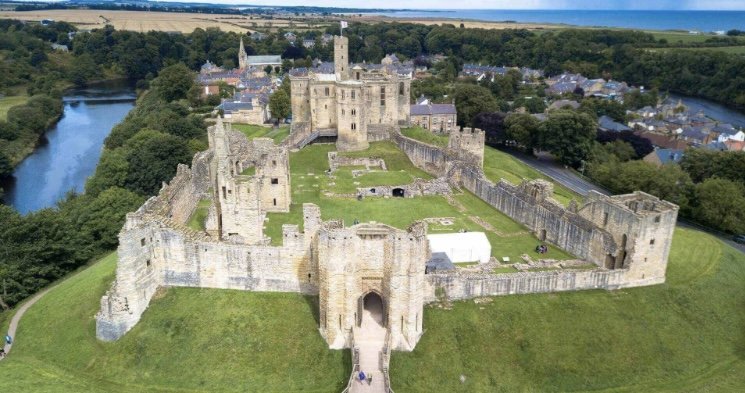Northumberland Country Zoo
Within walking distance of Laura’s Lodge, Northumberland Country Zoo is a small animal park, home to meerkats, snow leopards & lemurs, with an educational birds of prey show. As well as Bear Falls Softplay.
The park currently has 17 acres for visitors to explore with a wide range of animals to see from tiny Harvest mice to to fluffy snow leopards.
Druridge Bay & Druridge Bay Country Park
Infringed with rugged dunes, Druridge Bay has unspoilt coastline stretching as far as the eye can see. The area is a haven for birdwatchers, walkers and anyone wanting to breathe in the natural beauty of the Northumberland coast in a peaceful setting.
Spittal
A Victorian promenade, family friendly beach and lovely views across the estuary to Berwick.
Spital village stands on the south bank of the Tweed and because of its lovely sandy beach became a seaside resort. The Victorian promenade and ‘Venetian’ pavillion give the beach a traditional feel and it is a popular place for a classic beach day.
Holy Island
The Holy Island of Lindisfarne has a rich history in a setting of outstanding geology and wildlife.
Holy Island is situated at the heart of the Lindisfarne National Nature Reserve which is an internationally important area for birds on migration and as winter quarters. The small village is dominated by the Priory where the beautiful Lindisfarne Gospels were written and Lindisfarne Castle stands alone to the east.
Holy Island is only accessibe by crossing a tidal causeway from the mainland . It is essential to check the safe crossing times before you travel.
Bamburgh
Beaches, a stunning castle, dunes rich in flowers, rockpools and a place to learn the amazing story of Grace Darling.
Once the capital of the 17th century kingdom of Northumbria, it is now a seaside village dominated by the magnificent Bamburgh Castle overlooking miles of silver sands.
The castle was restored in the late 19th century and now houses an excellent collection of arms and artwork as well as a tea room and gift shop. Also in the village is the Grace Darling Museum commemorating the lifeboat heroine who is buried in the village churchyard.
Seahouses
Pretty harbour and gateway to the Farne Islands, famous grey seal and seabird colonies.
Seahouses is a busy little port. Potting boats share the harbour with holiday makers and the village is given over to catering for visitors and passers by.
Near the harbour are lime kilns dating from the 18th century, now used by local fishermen as a store for lobster pots. Excellent sandy beaches stretch south towards Beadnell and Embleton Bay.
The Farne Islands lie just off shore midway between Seahouses and Bamburgh. There are between 15 and 28 islands depending upon the state of the tide. They are designated as a National Nature Reserve and Special Protection Area for their important seabird colonies, and as a Special Conservstion Area for the grey seals which breed and rest there.
Beadnell
Tern colonies, an historic harbour, lime kilns, plenty of watersports and the historic St Ebba’s Church.
Stretching from the harbour is the long golden sweep of Beadnell Bay with the ruined Dunstanburgh Castle in the distance. This sheltered bay makes an ideal location for some of the best sailing and windsurfing on the Northumberland coast.
The village provides a range of pubs and cafes. There is an historic church dedicated to St Ebba.
This combination of charm and accessibility makes Beadnell a popular holiday village on the north east coast.
Newton-by-The-Sea
A delightful village which is popular for sailing and windsurfing with a lovely sandy beach and fine views across Embleton Bay to Dunstanburgh Castle. The area is renowned for bird watching and The National Trust owns most of the village and surrounding countryside. The ’Square’ is the heart of the old village, where low buildings surround a large grass square, with a pub in the corner, serving bar meals and hot soups for those walking on wild days.
Craster
Dramatic Dunstanburgh Castle, quarries, rare birdlife and lots of kippers.
Craster has the reputation for some of the most delicious oak-soaked kippers (herring) in the coutry. Today, kippers along with lobsters, crabs and tourism are the mainstay of Craster’s economy.
Boulmer and Hawick
Wading birds, fascinating geology, sandy beaches, fishing and a history of smuggling.
Boulmer is a traditional fishing village where the local blue cobles are still used to catch crab, lobster and sea salmon. The village has changed little in the last 100 years. Boulmer is perhaps best known for its RAF base.
Howick is a farming hamlet which is now popular with visitors for its accommodation and Howick Hall Gardens. Howick Hall, owned by the Grey family since the 1300s is now a popular destination for gardening enthusiasts.
The geology of the area is dominatd by the great whin sill.
Alnmouth
Estuary birds, saltmarsh and dunes, all surrounding an historic golf course and village.
A popular but peaceful coastal resort with superb sandy beaches and two golf courses including the fourth oldest in England.
After the loss of the port in Alnmouth in 1799 during the War of Independence, the town was revitalised with the coming of the railway in the 1840s. It became a popular holiday resort and remains so to this day.
Warkworth
A majestic medieval castle, a picturesque village and a river teaming with nature.
The picturesque village is overlooked by the massive remains of Warkworth Castle. The castle is the most splendid ruin of its type in Northumberland and has not been extensively restored like the castles of Bamburgh and Alnwick.
The sandy beach is only 1 mile away and you can travel by boat from the castle (or follow a shady path) upstream to the Hermitage, an unusual refuge dug into the face of the bluff by some hermit in the 14th century.
Amble
Amble is famous for its friendly people, authentic little fishing harbour, fascinating wildlife and natural wild environment.
Amble is still a working port and retains a small fishing fleet, ship building and an RNLI station. The town in increasingly catering for visitors with many independent shops, a good marina and ‘harbour village’.
Berwick upon Tweed
England’s northernmost town, well prseerved Elizabethan walls and beautiful riverside walks.
Berwick, along with former fishing village Tweedmouth and the seaside resort of Spittal, historically owes its livlihood to the river.
It has stone harbour walls and a cobbled quayside beneath the massive ramparts.
Berwick has perfectly preserved Elizabethan fortifictions, the most complete town defences of its type in Northern Europe, and 18th century barracks that were the first in Britain to be purpose built.
Built between and around these iconic historic sites are Georgian buildings of great character, linked by cobbled lanes and narrow archways. This is a town packed with interest and tradition, and even boasts a buiding which leans more than the Tower of Pisa - a Granary, now restored as a youth hostel, gallery and bistro.
Warkworth Castle & Hermitage
Warkworth Castle is a classic Norman motte and bailey castle built above the loop in the river Coquet overlooking the medieval town below.
The castle is a beautiful mix of ruin and habitable rooms with the Dukes apartment in the magnificent cross shaped keep furnished and comfortable. With the location, crowning a hilltop above the village and river with a fortified bridge it is easy to see why Puvenser declared this as “one of the most exciting sequences of views one can have in England”.
Half a mile from the castle, tucked away by the Coquet and accessibly only by boat, stands a much more peaceful building: the Hermitage, a medieval rock cut chapel.















